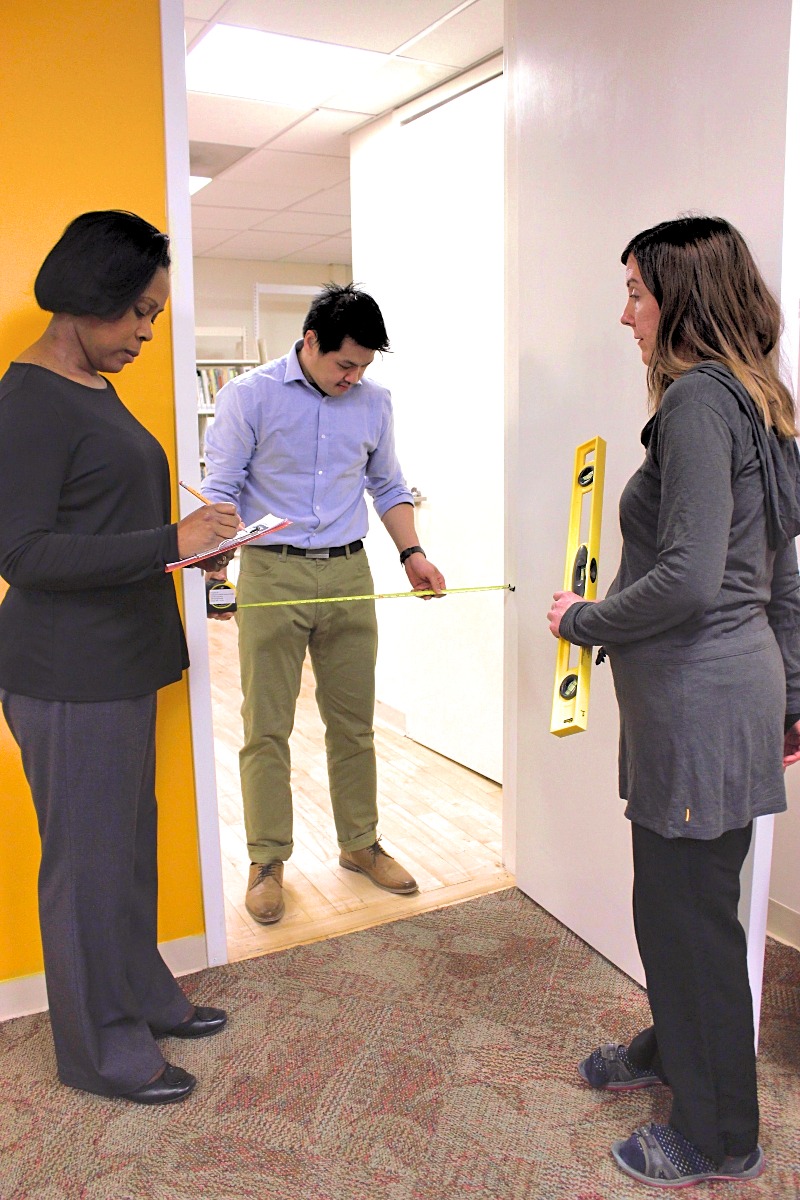Step 5 - Conduct a Self-Evaluation
The self-evaluation is a comprehensive review of all programs, activities, and services operated by the public entity. The self-evaluation was required to be completed by January 26, 1993. Because changes were made to the Title II regulations and the ADA Standards for Accessible Design in 2010, an updated self-evaluation is recommended. The Title II regulations and ADA Standards were changed to include recreation areas from play areas to swimming pools, residential facilities, event ticketing policies, policies concerning other-power-driven mobility devices, miniature horses as service animals and specifications for video-remote-interpreting. Plus since information technology barely existed when the ADA was passed in 1990, and all state and local governments now have website that need to be accessible to people with disabilities, websites need to be evaluated.
After conducting a self-evaluation, a public entity can develop a transition plan for structural changes and work with the public entity’s departments and agencies to modify policies and procedures.
Identify Departments and Programs
One way to make sure that the self-evaluation is comprehensive is to identify all of the public entity’s programs, services, and activities. A city or town may have twenty or more departments, including:
-
Assessor
-
Building
-
City Clerk
-
Council on Aging
-
Fire
-
Health
-
Historical
-
Hospital
-
Human Resources
-
Libraries
-
Mayor's or Manager’s Office
-
Parks and Recreation
-
Police
-
Planning
-
Public Works
-
Retirement
-
School
-
Treasurer
-
Youth Services
-
Veterans
-
Voter Registrar
A state or county will probably have more agencies, offices and departments.
Within each department there may be many programs, services, and activities. A Council on Aging, for example, might provide meal programs, transportation programs, health services, recreational activities, and referral services. A state judiciary will have many courts and might provide other services such as mediation, divorce education, legal training and a court newsletter.
The evaluation can be done in at least four ways:
-
By the ADA Coordinator
-
By the ADA Coordinator and an ADA team
-
By the ADA Coordinator and ADA liaisons for each department and agency
-
By an outside consultant in collaboration with the ADA Coordinator
The size of the public entity and the budget will probably determine how the evaluation is conducted.
The self-evaluation should cover general nondiscrimination provisions, communications, program and facility accessibility and web accessibility.
To conduct a self-evaluation:
-
Identify all programs, activities, and services and their locations.
-
Determine whether employees and officials are familiar with the public entity’s ADA obligations, including the requirement to make reasonable modifications to policies, practices and procedures.
-
Determine whether employees and officials know how to arrange for auxiliary aids and services, such as sign language interpreters, material in Braille and assistive listening systems; to ensure that communication with people with disabilities is as effective as others.
-
Review service, activity and program’s policies and procedures to determine whether they ensure an equal opportunity for people with disabilities to participate and benefit.
-
Survey facilities and determine whether there are physical barriers to access programs. If non-structural changes, such as moving programs, should be made, include them in the action plan. If structural changes are needed, include them in the transition plan.
The self-evaluation forms on this website are in fillable PDF, Word and text for Brailling.


User Comments/Questions
Add Comment/Question